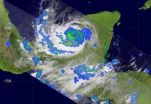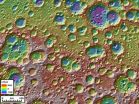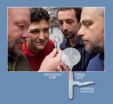(Press-News.org) PITTSBURGH, Sept. 15 – Fat-derived stem cells can be safely used to aid reconstruction of breast tissue after mastectomy as long as there is no evidence of active cancer, according to researchers at the University of Pittsburgh School of Medicine. Their findings are available in Tissue Engineering Part A.
Plastic surgeons have long moved fat from one part of the body into the breasts for reconstruction, but with some complications and a varying success rate, explained senior author Vera S. Donnenberg, Ph.D., assistant professor of surgery, Pitt School of Medicine. More recently, they have considered adding stem cells derived from adipose, or fat, tissue (ADSC) or the bone marrow to the transferred fat with the aim of supporting graft integration by enhancing new blood vessel formation.
"But it has not been clear whether these stem cells are safe for breast cancer patients because they could send growth signals that promote tumor reactivation or provide new blood vessels for the tumor," Dr. Donnenberg said. "Our research suggests that this risk is real if the patient still has active tumor cells, but is safe when the cells are inactive or resting."
For the study, the researchers collected adipose tissue that would have been discarded during "tummy tuck" procedures performed by study co-author J. Peter Rubin, M.D., associate professor of surgery, Pitt School of Medicine, whose team has several federally funded projects underway to develop fat grafting and stem cell therapies for reconstruction of a variety of tissues.
The researchers isolated ADSC from normal fat and mixed them with human breast cancer cells obtained directly from patients. After two weeks in culture they found that ADSC greatly encouraged the growth of tumor cells. In a followup experiment, the researchers injected small numbers of highly purified active or resting tumor cells under the skin of mice either with ADSC or with previously irradiated tumor cells. The combination of active tumor cells and ADSC led to dramatic tumor growth, while injections of resting tumor cells were not affected by co-injection of either ADSC or irradiated tumor cells.
"There is already some clinical evidence that breast reconstruction with transplanted fat is safe. Our findings lead us to conclude that augmentation of fat grafts with additional ADSC should be postponed until there is no evidence of active cancer," Dr. Donnenberg said. "Our data in the mouse suggest that dormant cancer cells are not sensitive to the growth signals sent by the ADSC."
INFORMATION:
Co-authors of the paper include Ludovic Zimmerlin, Ph.D., Albert D. Donnenberg, Ph.D., Per Basse, M.D., Ph.D., and Rodney J. Landreneau, M.D., all of the University of Pittsburgh.
The study was funded by grants from the U.S. Department of Defense, the National Institutes of Health, the Hillman Foundation, the University of Pittsburgh Cancer Institute, the Glimmer of Hope Foundation and the Commonwealth of Pennsylvania through the McGowan Institute for Regenerative Medicine.
About the University of Pittsburgh School of Medicine
As one of the nation's leading academic centers for biomedical research, the University of Pittsburgh School of Medicine integrates advanced technology with basic science across a broad range of disciplines in a continuous quest to harness the power of new knowledge and improve the human condition. Driven mainly by the School of Medicine and its affiliates, Pitt has ranked among the top 10 recipients of funding from the National Institutes of Health since 1997 and now ranks fifth in the nation, according to NIH data for 2008 (the most recent year for which the data are final).
Likewise, the School of Medicine is equally committed to advancing the quality and strength of its medical and graduate education programs, for which it is recognized as an innovative leader, and to training highly skilled, compassionate clinicians and creative scientists well-equipped to engage in world-class research. The School of Medicine is the academic partner of UPMC, which has collaborated with the University to raise the standard of medical excellence in Pittsburgh and to position health care as a driving force behind the region's economy. For more information about the School of Medicine, see www.medschool.pitt.edu.
Significant weight loss not only improves daily life of morbidly obese woman but also decreases the risk for cardiovascular disease (CVD). However, many people can not lose weight or can not maintain weight loss without help. Bariatric surgery is emerging as a valuable procedure to help morbidly obese individuals lose weight, as studies have shown; it can improve many health profiles and lower mortality. Now, researchers have found another positive impact of significant weight loss after bariatric surgery: it can significantly improve the lipoprotein profiles of women within ...
NASA's Aqua and TRMM satellites have been watching Karl's clouds and rainfall as he moved across Mexico's Yucatan Peninsula and into the Gulf of Mexico today, powering up into a hurricane.
Infrared imagery of Karl's cloud temperatures from NASA's Atmospheric Infrared Sounder (AIRS) instrument this morning, Sept. 16 at 0753 UTC (3:53 a.m. EDT) showed strong convective activity in his center as indicated by high thunderstorms that were as cold as -63 Fahrenheit. That strong convection was an indication that the warm waters of the Gulf of Mexico were strengthening the storm. ...
CORVALLIS, Ore. – A new study by an Oregon State University business professor has found that developing countries that adopt major international economic treaties do not necessarily gain more foreign direct investment.
In fact, in some cases adopting these treaties can hurt, not help a developing country, contrary to what agencies such as the World Trade Organization (WTO) espouse. The study, published in the current online version of the Journal of World Business, has major implications for Latin American and Caribbean intellectual policy reform
Ted Khoury, an assistant ...
GOES-13 satellite imagery this morning showed the "tropical trio": Tropical Storm Karl over the Gulf of Mexico, Hurricane Igor in the central Atlantic, and a waning Hurricane Julia in the eastern Atlantic Ocean. Hurricane Julia has now lost her Category 4 Hurricane status, and is currently a Category 2 hurricane in the eastern Atlantic and weakening. Wind shear, cooler sea surface temperatures and warmer cloud top temperatures all spell a weaker Julia.
The Geostationary Operational Environmental Satellite known as GOES-13 that monitors weather over the U.S. East Coast ...
ANN ARBOR, Mich.---As another round of talks continues between Israelis and Palestinians, a new University of Michigan study documents the impact the violence has been inflicting on the region's children.
Palestinian and Israeli children not only suffer the direct physical consequences of violence, they are also being psychologically scarred by the high levels of violence they witness, according to the study, presented earlier this summer at the International Society for Research on Aggression.
Nearly 50 percent of Palestinian children between the ages of 11 and 14 ...
The moon was bombarded by two distinct populations of asteroids or comets in its youth, and its surface is more complex than previously thought, according to new results from NASA's Lunar Reconnaissance Orbiter (LRO) spacecraft featured in three papers appearing in the Sept. 17 issue of Science.
In the first paper, lead author James Head of Brown University in Providence, R.I., describes results obtained from a detailed global topographic map of the moon created using LRO's Lunar Orbiter Laser Altimeter (LOLA). "Our new LRO LOLA dataset shows that the older highland impactor ...
A multinational team that includes a North Carolina State University researcher has found another piece of the atmospheric puzzle surrounding the effects of aerosol particles on climate change. Their findings will contribute to our ability to more accurately measure human impact on climate, and to determine how much pollution may "mask" the actual rate of climate change.
Dr. Markus Petters, an NC State assistant professor of marine, earth and atmospheric sciences, traveled to the Amazon rainforest in a remote area of Brazil as part of a team that wanted to study how a ...
ANN ARBOR, Mich. — A University of Michigan-led research team has identified a gene responsible in some families for a devastating inherited kidney disorder, thanks to a new, faster method of genetic analysis not available even two years ago. The success offers hope that scientists can speed the painstaking search for the genes responsible for many rare diseases and test drugs to treat them.
The U-M scientists report their success with exome capture, a groundbreaking genetic analysis technique, in the September issue of Nature Genetics.
The U-M- led international ...
A discovery made by Dr. Tarik Möröy, President and Scientific Director and Director of the Hematopoiesis and Cancer research unit at the Institut de recherches cliniques de Montréal (IRCM), and his team was recently published in Blood, the official journal of the American Society of Hematology. The researchers found that a protein can regulate certain characteristics of blood stem cells, which could lead to a better treatment for leukemia patients. Dr. Cyrus Khandanpour, medical doctor and postdoctoral fellow in Dr. Möröy's laboratory, is the study's first author.
The ...
Magnetometers come in many shapes and sizes – an ordinary hand-held compass is the simplest – but alkali-vapor magnetometers are extrasensitive devices that measure magnetic fields using light and atoms. They can detect archaeological remains and mineral deposits underground by their faint magnetic signatures, among a host of other scientific applications.
Researchers from the U.S. Department of Energy's Lawrence Berkeley National Laboratory, the University of California at Berkeley, and the Vavilov State Optical Institute in St. Petersburg, Russia, have now made sensitive ...



